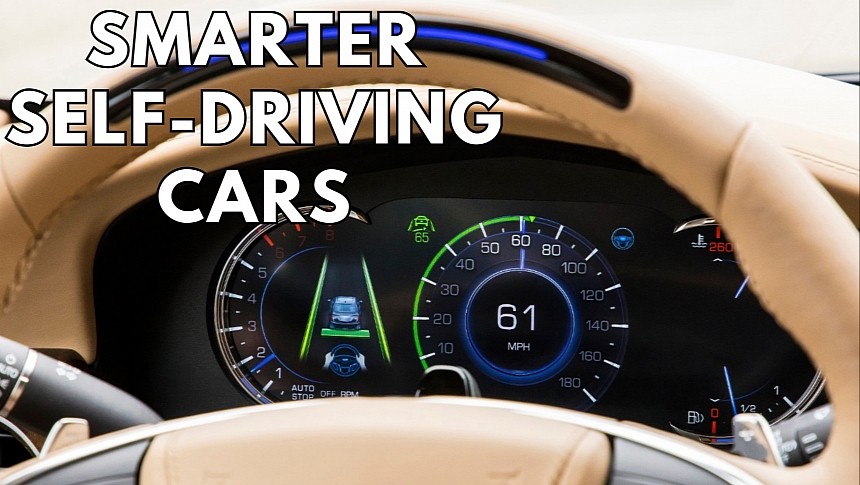Self-driving cars are the next big thing in the automotive industry, and General Motors wants to lead this push. Leaving aside some of its latest questionable decisions, such as ditching Android Auto and CarPlay in future EVs, the carmaker is also working on new technology that could improve the time spent in a car.
General Motors describes one of its latest ideas in a patent called "predicting driver status using glance behavior," explaining that in some cases, the driver of an autonomous vehicle is tempted to take over manual control because they feel uncomfortable.
The carmaker acknowledges that self-driving cars could make people anxious due to the traveling speed in certain weather conditions or because it's sitting too close to the vehicle in front. Such actions make the driver uncomfortable, eventually taking over control to alter the driving behavior.
General Motors explains that this system can rely on technology already available in modern cars, such as driver monitoring equipment. The glance behavior observed by a driver monitoring system can be processed to determine when the driver feels uncomfortable and is more likely to take over manual control, eventually adjusting the vehicle's behavior.
And this leads us to the next purpose of GM's technology. The carmaker wants to use the data to train its autonomous vehicles to align with the owner's driving style. If the vehicle drives too fast when it rains and the driver wants to take over manual control, the system can determine this and train the car to reduce the speed on wet tarmac.
Eventually, GM says it would "reduce the number of take-over events based on the discomfort of the driver." Additionally, the system can contribute to a broader training system to update the behavior model for an autonomous vehicle to "learn the tendencies of a particular driver."
In other words, GM wants autonomous vehicles to behave as drivers expect, preventing those moments when they go crazy, and people feel more comfortable controlling the steering wheel.
The carmaker says it would work on a Level 3 and higher self-driving system. It divides the gaze model into three categories, with the third representing a state when the driver is expected to take over control. It's also the point when a self-driving vehicle should adjust its behavior on the road to prevent this from happening.
GM's technology is still in the patent stage, and I don't expect it to go to mass production in the next decade. Self-driving cars are still in their early days, and most carmakers are flooding the USPTO with patent applications "just in case."
You can find the complete patent in the box after the jump if you want to read all the technical details about the system.
The carmaker acknowledges that self-driving cars could make people anxious due to the traveling speed in certain weather conditions or because it's sitting too close to the vehicle in front. Such actions make the driver uncomfortable, eventually taking over control to alter the driving behavior.
General Motors explains that this system can rely on technology already available in modern cars, such as driver monitoring equipment. The glance behavior observed by a driver monitoring system can be processed to determine when the driver feels uncomfortable and is more likely to take over manual control, eventually adjusting the vehicle's behavior.
And this leads us to the next purpose of GM's technology. The carmaker wants to use the data to train its autonomous vehicles to align with the owner's driving style. If the vehicle drives too fast when it rains and the driver wants to take over manual control, the system can determine this and train the car to reduce the speed on wet tarmac.
Eventually, GM says it would "reduce the number of take-over events based on the discomfort of the driver." Additionally, the system can contribute to a broader training system to update the behavior model for an autonomous vehicle to "learn the tendencies of a particular driver."
In other words, GM wants autonomous vehicles to behave as drivers expect, preventing those moments when they go crazy, and people feel more comfortable controlling the steering wheel.
The carmaker says it would work on a Level 3 and higher self-driving system. It divides the gaze model into three categories, with the third representing a state when the driver is expected to take over control. It's also the point when a self-driving vehicle should adjust its behavior on the road to prevent this from happening.
GM's technology is still in the patent stage, and I don't expect it to go to mass production in the next decade. Self-driving cars are still in their early days, and most carmakers are flooding the USPTO with patent applications "just in case."
You can find the complete patent in the box after the jump if you want to read all the technical details about the system.








